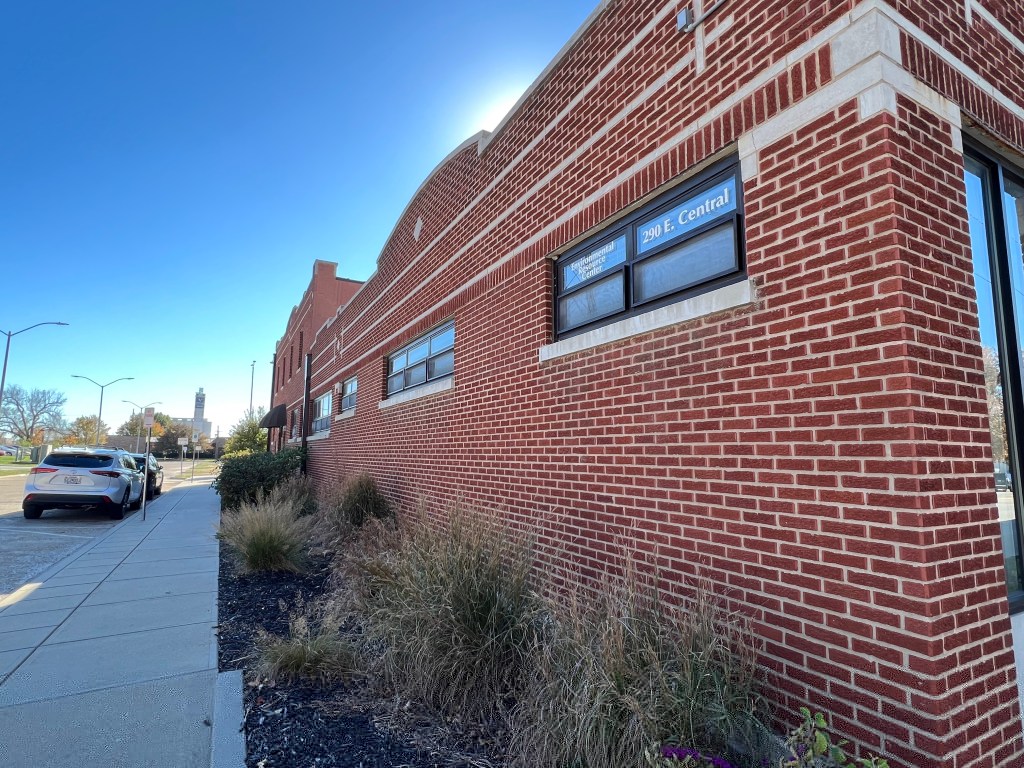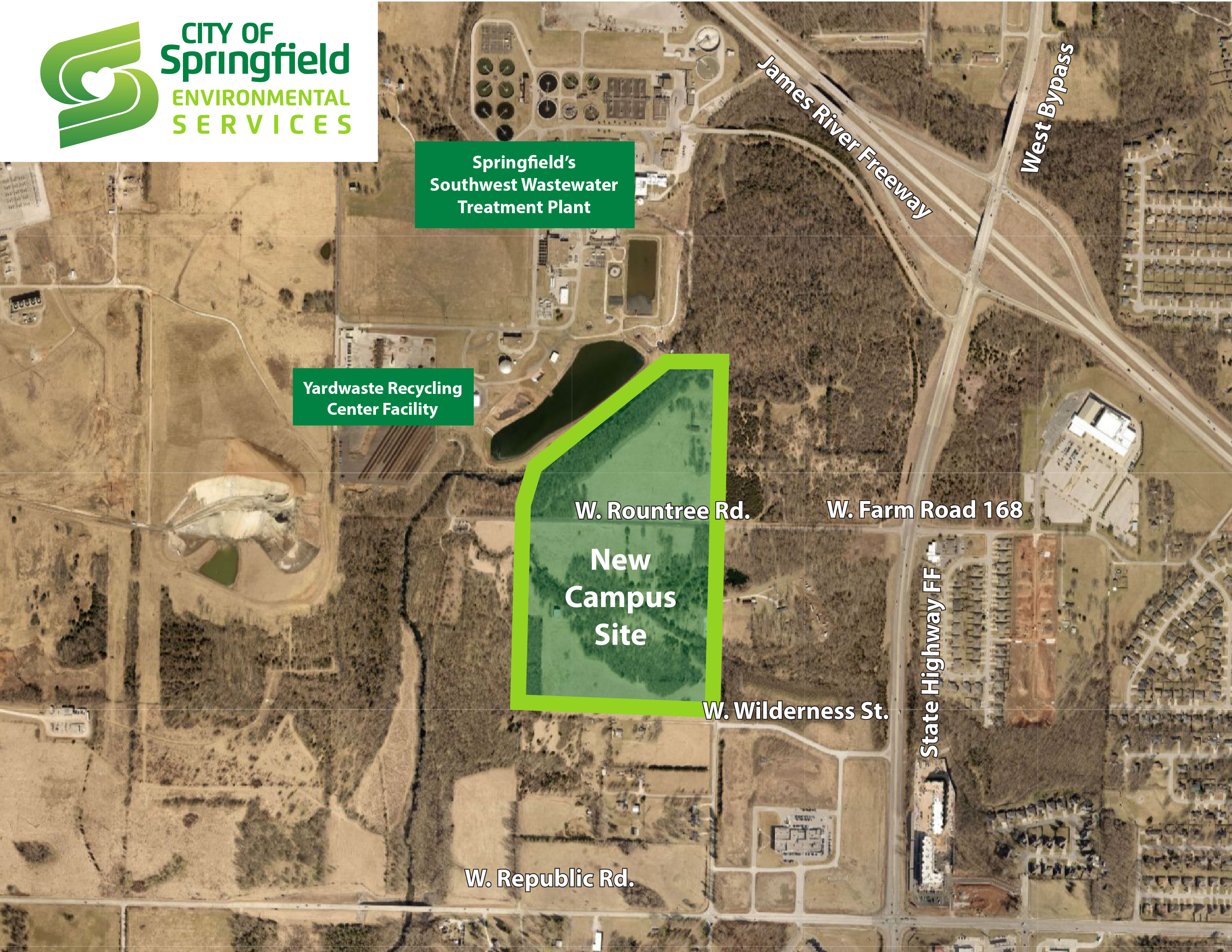In an effort to improve services and consolidate staff, the Springfield Department of Environmental Services is planning a new $30 million campus.
The new campus will accommodate the department’s growth to meet the requirements of a since-amended 1995 judgment from the Greene County Circuit Court, to ultimately address overflows and improve water quality in Springfield.
Already city-owned, the property is located near existing Environmental Services facilities, southwest of the West Bypass and James River Freeway interchange. The land is on the north and south sides of Rountree Road near Wilsons Creek.
The campus will house office space for about 140 employees, maintenance and storage facilities, a public-facing education center and possibly a fueling station, with plans for it to, “serve as an example of sustainable land development and a showcase of development in harmony with the environment.”
Current setup limits expansion
Since the plan to fulfill the consent judgment — and address problems with the city’s aging sewer system — set into motion in 2015, Environmental Services has added equipment to its inventory and nearly doubled staff in some areas, according to Assistant Director Ron Petering.
Staff and equipment is spread across the city. Personnel can be found on three different floors of the Busch Municipal Building, the Environmental Resource Center and the Phil Broyles Complex, which primarily houses Public Works Department operations, as well as various other facilities.



Located next to two existing Environmental Services facilities — the Springfield Yardwaste Recycling Center and the Southwest Wastewater Treatment Plant — the new campus will consolidate operations, providing office space for administration and technical staff. It will also provide space equipment, sewer maintenance vehicles and other supplies.
“Over the decades, each of these service lines have evolved in different physical locations,” Environmental Services Director Errin Kemper said in a press release. “Unifying our staff in one location will allow us to operate more efficiently and will free up much needed space for other City departments.”
They also plan to incorporate an educational space open to the public, to serve a variety of student and adult programs. Additionally, the campus could serve an educational purpose, exhibiting good stormwater management practices and tying in the buildings with the natural environment.
While Petering said the staff has ideas about what it wants to see at this new campus, it remains in the early stages. The City of Springfield just issued a request for qualifications for architectural services and design of the project on Oct. 23.
“We’ve done some schematic planning sufficient to confirm that the land we've chosen is of sufficient size for our needs,” Petering said. “But once we have the consulting team that will do the detailed design, selected and under contract, we’re going to utilize them to confirm what the best site plan is…with a fresh look at it, it might change significantly so it's probably too early to say we have a clear idea of what it's going to look like.”
The current timeline has construction slated to begin in 2025, and Environmental Services calling it home by 2026, according to Petering.
Impact on rates to be minimal in efforts to source additional $15 million

Initially identified as a need in 2021, when the court’s amended consent judgment established an updated plan, $15 million was accounted for to pay for the campus — already “baked” into existing revenue sources.
While Petering said that amount was meant to serve as a placeholder anyway, inflation brought the estimate to construct the campus to $30 million. It will be paid for through sewer and solid Waste enterprise funds, which are primarily made up of solid waste disposal fees and wastewater rates.
Petering said Environmental Services employees are exploring alternative ways to source the additional $15 million needed, perhaps through low-interest loans, and that they considering splitting the project up into phases. He emphasized that they are looking at options that would have a minimal impact on rates.
“We know there's going to be a differential that still needs to be programmed, yet, financially,” Petering said. “We believe there are ways that we can do that that are not going to materially affect rates.”
The $30 million is only estimated to cover construction, and does not include costs associated with the design and surveying activities, according to Petering.
What is the consent judgment?
In 1995, the Missouri Department of Natural Resources alleged that the City of Springfield violated the Missouri Clean Water Law. The state and city entered a consent decree, which was amended in 2012 and 2021.
As the city works to address the problems that lead to DNR’s petition, including having successfully fulfilled the requirements of the 2012 amendment, the parties agreed to additional investments of $300 million through 2035 to further improve sewer and stormwater systems across Springfield.
The new campus will help Environmental Services further carry out those requirements and implement necessary upgrades to improve water quality in the years ahead.

